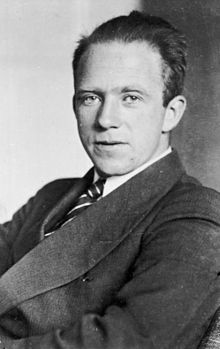Lifetime
Born: 05.12.1901, Würzburg, GermanyPassed away: 01.02.1976, Munich, Germany
Info
Diksha: GermanyAbout
Werner Karl Heisenberg was a German theoretical physicist and one of the key creators of quantum mechanics.
He published his work in 1925 in a breakthrough paper. In the subsequent series of papers with Max Born and Pascual Jordan, during the same year, this matrix formulation of quantum mechanics was substantially elaborated. In 1927 he published his uncertainty principle, upon which he built his philosophy and for which he is best known. Heisenberg was awarded the Nobel Prize in Physics for 1932 "for the creation of quantum mechanics".
He also made important contributions to the theories of the hydrodynamics of turbulent flows, the atomic nucleus, ferromagnetism, cosmic rays, and subatomic particles, and he was instrumental in planning the first West German nuclear reactor at Karlsruhe, together with a research reactor in Munich, in 1957. Considerable controversy surrounds his work on atomic research during World War II.
Following World War II, he was appointed director of the Kaiser Wilhelm Institute for Physics, which soon thereafter was renamed the Max Planck Institute for Physics. He was director of the institute until it was moved to Munich in 1958, when it was expanded and renamed the Max Planck Institute for Physics and Astrophysics.
Heisenberg was also president of the German Research Council, chairman of the Commission for Atomic Physics, chairman of the Nuclear Physics Working Group, and president of the Alexander von Humboldt Foundation.
Education: Ludwig Maximilian University of Munich, University of Göttingen
Awards: Nobel Prize in Physics, Max Planck Medal
